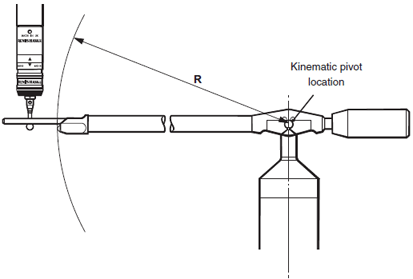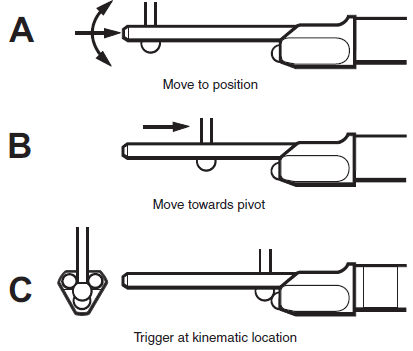Navigation
Principle of the MCG operation
The counterbalanced arm, as shown below, has a kinematic seat which sits on a precision ruby ball located on an adjustable tower. The kinematic seat allows very accurate arm pivoting, both horizontally through 360° and vertically through ±45°. At the end of the counterbalanced arm is a second kinematic location which is formed by two rods, the tungsten carbide ball of the arm, and the probe stylus ball. The arm is able to sweep a truncated spherical outline of radius R about the kinematic pivot location.
The counterbalanced arm is balanced to provide a downforce of 2 gm at the measuring end to allow arm movement without false triggering.

The probe is moved to its required position (position A) and then towards the pivot position (B) where it will trigger at the kinematic location (C) and the radius is measured.
Since the counterbalanced arm is of a constant radius R, any deviation from R is an indication of the volumetric measuring performance of the CMM for that volume swept by the arm. Repetition of a sequence of readings checks the system for repeatability. Volumetric measuring performance is the maximum error between any two points in any plane, over any distance within the full measuring volume.
On horizontal arm machines the probe is mounted at 90° to the arm.
